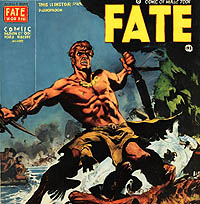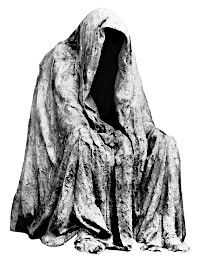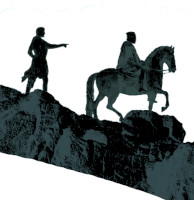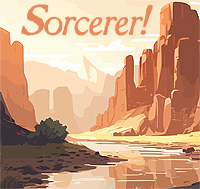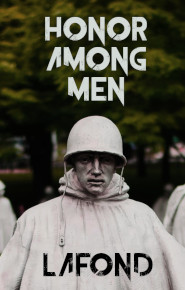“After Captain Pedro de Alvarado had left for Cuba, the General, captains and soldiers decided, with the approval of the pilots, that we should continue close to shore and see what could be discovered along the coast. Keeping on our course, we sighted the Sierra de Tuxtla; and further on, two days later we sighted another and higher range which is now called the Sierra de Tuxpan, after a town of that name which is nearby. As we followed the coast we saw many towns, as far inland as six to nine miles, and being part of the province of Panuco. Sailing further, we came to a great and rapid river which we named River of Canoes, at the mouth of which we anchored.
“When all three ships lay at anchor and we were a little off our guard, about twenty large canoes [holding about 30 warriors each], full of Indian warriors armed with bows, arrows and lances, suddenly came down the river and made straight for the ship which seemed to them the smallest and lay nearest the shore. It was commanded by Francisco de Montejo. The Indians then shot a flight of arrows, which wounded five soldiers and cast ropes about the ship, intending to tow it off. They even cut one of the ship’s cables with their copper axes. However, the captain and soldiers put up a tough fight, overturning three of the canoes. We hurried to their aid in boats with muskets and crossbows. We wounded more than a third of these Indians, who retreated from their unfortunate adventure to the place from whence they had come.”
Notes
The Spanish, with their steel weapons, had superiority in every tactical situation and environment. However, their advantage in naval operations was total. Although the Indians could pack almost as many fighters in a canoe as the Spaniards could in a boat, the boat was of deeper draft, making it more difficult to capsize, had higher sides to provide shelter against missile weapons, and also served as a more stable firing platform due to its greater width. Additionally, muskets and crossbows, while having an inferior rate of fire to bows and arrows, were more suitable to river fights and inshore exchanges, because these did not require the muscular effort of drawing a bow, the action of which would rock a canoe when firing broadsides.
Naval operations of this type, using boats and tiny ships, built where needed, provided one of the keys to eventual Spanish victory. More importantly, note the ingenuity and determination of these Aztecs, facing what amounted to an Alien invasion. If not for the 95% die-off from disease and the consequent discrediting of the indigenous cosmology, it is unlikely the Spanish would have been able to impose their will militarily before the Aztecs began using captured weaponry and employing captives as specialized slaves for gunpowder manufacture, and eventually even foundry work. The common Spanish soldier, demonstrated the ability, throughout the Americas, to mine and refine the materials that made up his arsenal, even forging iron in Upper Mississippi and Tennessee in 1543. Also, Carolina and Virginia Indian tribes employed escaped English slaves [sometimes highwaymen and bandits from Scotland and England, sentenced to indentured servitude in the colonies] as technical advisors. Additionally, these settled tribes also held survivors of the "lost" Roanoke Colony as copper miners and artisans. The Aztecs would have been much quicker to put European captives to such use, and would have had the added benefit of all of their captives having military experience.


